A Stroppe Baja Bronco with a little extra "South of the Border" Flavor
by Todd Zuercher
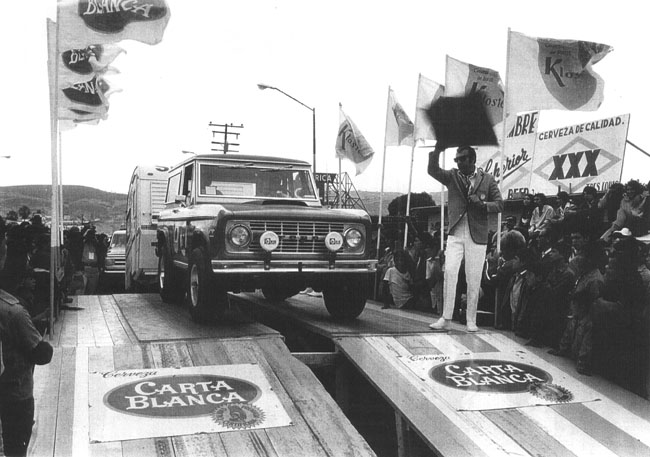
By 1971, Carl Jackson's reputation in the young sport of off-road racing was secure. Hailing from the off roading mecca of Hemet, CA, Jackson not only raced against fellow Hemet residents Rod Hall and Larry Minor in early races like the Riverside Grand Prix, but beat them on a regular basis. His 1954 CJ-5 was a familiar sight in the winner's circle in those early years of racing dominated by privateers. In the late 1960s, Carl was hired by Vic Hickey to teach Steve McQueen how to drive the infamous Oldsmobile-powered 'Baja Boot' off road race car. A year later, he found himself behind the wheel of a Rambler sedan, driving for James Garner's team after the actor sold his Broncos and put together a 10-car team for the 1969 season. In that year's Baja 500, Jackson was the only driver on the team to bring his car to the finish line.
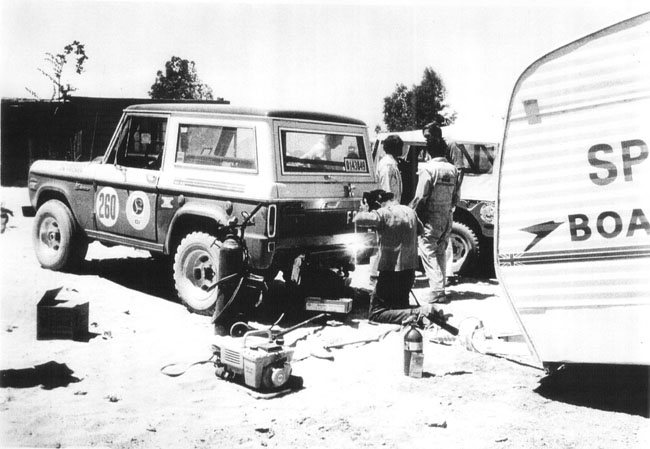
Carl's ability to not only bring vehicles to the finish line, but also win races caught the eye of legendary Bronco builder Bill Stroppe and Jackson got an opportunity to drive a Bronco for Stroppe as the 1970s began. Carl had success in the Broncos and became a regular driver for the team. He had come a long way from bouncing through the southern California desert in an old CJ-5. When Jackson was called into Stroppe's office in early 1971, he had no idea what his next driving assignment had in store for him.
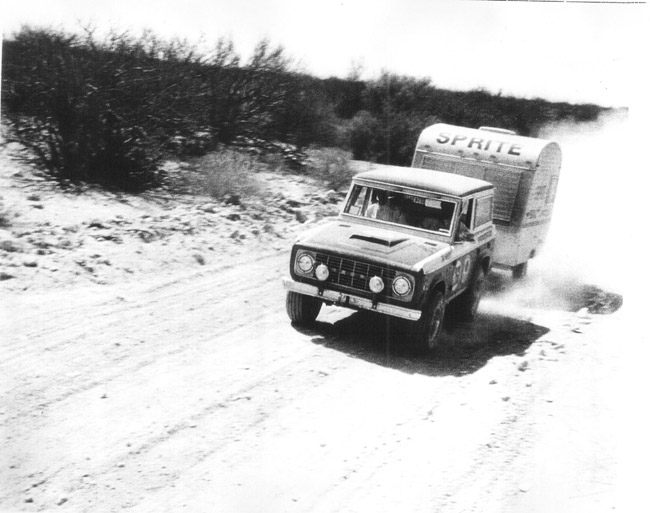
In the early 1970s, Caravans International, a trailer manufacturer in Nappanee, Indiana, was looking for a unique way to advertise the durability and toughness of their new Sprite travel trailer. The 1500 lb. Sprite was designed in the UK and built under license by Caravans International. Caravans International contacted their dealer in southern California, Wayne Lindsey, about their idea to have one of their trailers towed in a Baja race. Wayne knew that Bill Stroppe was the one person who could take such an idea and turn it into reality. Lindsey contacted Stroppe about the idea. Stroppe, never one to turn down a challenge, agreed to it and remarked to Lindsey that he had 'one driver crazy enough to do it'. In this case, 'crazy' equated to 'smart' and Bill knew that if anyone could bring a travel trailer to the finish line, Carl Jackson could do it. Carl accepted the challenge in Stroppe's office that day and the plan was put into action.

Wayne Lindsey purchased a 1971 Stroppe Baja Bronco from Fairway Ford in Placentia, California, prior to the race and had it delivered to Stroppe's shop in Signal Hill for race preparations. Stroppe added a roll cage to the existing roll bar, applied some decals, installed different tires, and the Bronco was deemed ready to race. Lindsey questioned whether the bolt-on Class II hitch would survive the lengthy tow, but Stroppe assured him it would.
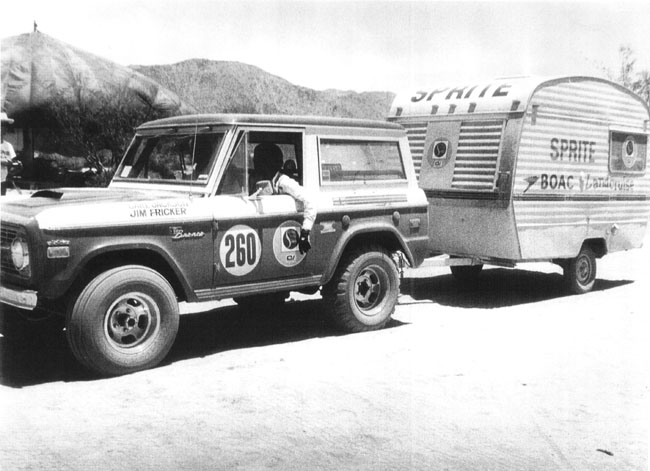
On race day, NORRA(the sanctioning body) didn't quite know what class to place the Bronco in so they ended up placing Jackson, with co-driver Jim Fricker, at the very end of the starting lineup of 226 vehicles. They didn't think the Bronco and trailer had a chance of finishing the race at all, much less in the 30 hour allotted time limit and they didn't want the unwieldy combo holding up race traffic in the narrow sections of the course. Although he put on a brave face, Carl Jackson admits today he didn't know how they would fare either. In the pre-race activities, they encountered Bud Ekins and Steve McQueen in a Ford pickup sporting a smashed quarter panel; a victim of an encounter with some rocks in a narrow canyon along the course, Pointing to the dented sheetmetal on their vehicle, Ekins and McQueen were incredulous that Carl and Jim would try and tow a trailer through some of the canyons on the course.
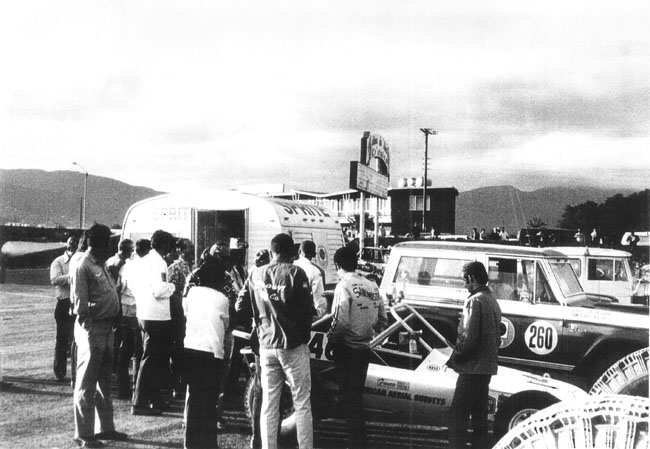
Jackson and Fricker ended up literally dragging the trailer in spots in the wilds of Baja. While traversing rough sections of the course early in the race, Carl and Jim discovered the transfer case wouldn't shift into low range. They crawled as best they could but as any Bronco owner knows, the woefully inadequate stock cooling systems don't last long when worked hard. The engine temperature soon climbed to 220'F and stayed there for the rest of the race. The stock tires and rims on the trailer proved to be a weak spot as well. On several occasions, the tires went flat in canyons too narrow to give Carl and Jim access to change the tires immediately. They were forced to drive on the rims until the trail widened to a sufficient width. Carl can still remember the sound of those banging rims today over thirty years later. During one of the tire changes, the winds were so strong that Jim Fricker had to hold the trailer on the jack while Carl changed the tire and wheel. 'Fricker, I think McQueen was right', Jackson recalls muttering during that tire change. In all, they suffered five flats on the trailer.
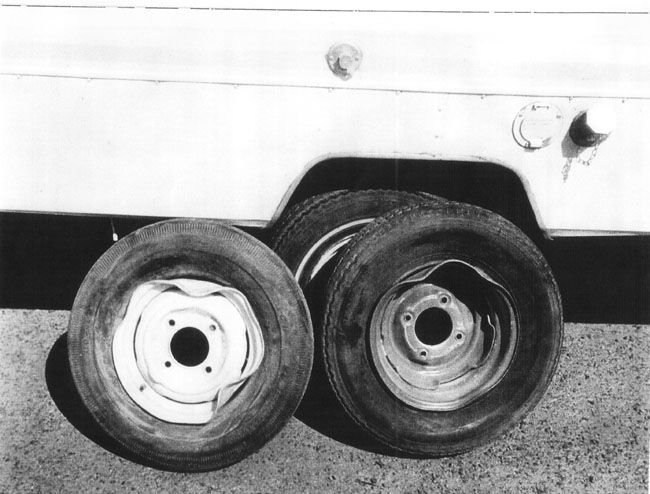
Flat tires weren't the only challenge encountered along the way. In the early days of Baja racing, your entry fee paid for all your fuel at pit stops along the route. At the El Rosario pit, Carl recalled the pit personnel wouldn't give them gasoline because they didn't believe they were an actual race vehicle. 'Why would a race car be towing a travel trailer?', they asked. Jackson and Fricker finally found someone who spoke Spanish and could explain to the pit personnel that these crazy gringos were indeed racing. And remember that hitch? Well, the bolts did come loose and disappear numerous times. The Stroppe team finally resorted to a welder and permanently attached the hitch to the frame at the San Felipe pit, three-quarters of the way through the race.
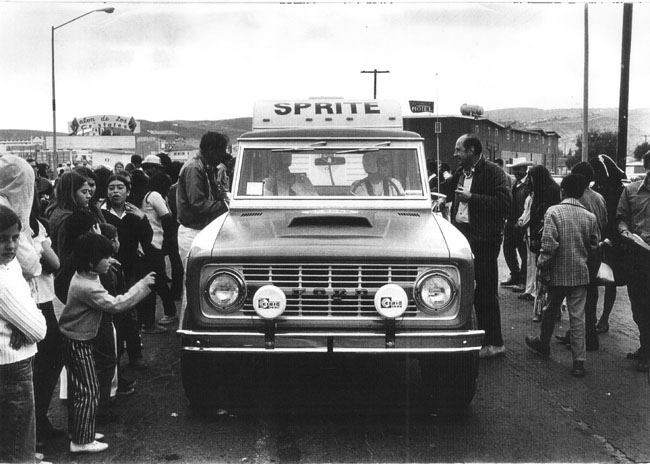
Twenty six hours and two minutes after beginning their journey in Ensenada, Carl Jackson and Jim Fricker finished the 1971 Baja 500. They not only finished the race, they finished well under the time limit and beat many of their competitors as well. Carl wound up 19th in class and 105th overall, besting 121 of his competitors. In spite of all the flat tires, Carl remembers the trailer fairing quite well. The interior showed no signs of its arduous journey other than a curtain rod that had come loose! The executives from Caravan International were ecstatic over how well their trailer held up and started making plans for entering a vehicle in the 1971 Mexican(nee Baja) 1000 to tow the trailer again. One of the executives thought the trailer didn't look beat up enough and was going to put some dents in the side with a sledgehammer until Jackson convinced him not to go to such lengths.
The trip down the Baja peninsula in the 1000 mile race for 1971 never came to pass. At some point prior to the race, NORRA officials denied entry to the trailer for the contest. One can only surmise that it would not have looked good to have a team towing a travel trailer in the world's toughest race! Instead, Wayne Lindsey drove the Bronco and trailer back to Indiana to Caravan International headquarters. The trailer toured the 4WD and RV show circuit for some time advertised as 'the travel trailer that beat Parnelli Jones in the Baja 500' (Jones did not finish that year).
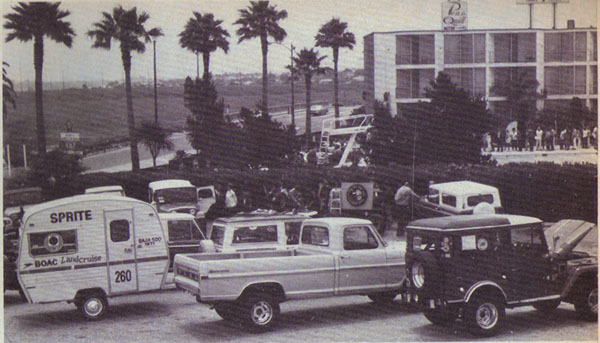
Carl Jackson continued to drive Broncos for Bill Stroppe and then raced Ford Couriers until he left the Stroppe team in the mid-70s. He continued his winning ways driving a factory-sponsored Nissan pickup at the Bonneville Salt Flats, setting 7 world records in the process. Six of the records still stand today. Today, Carl and his wife Mendy live in Lake Havasu City, Arizona, and own a Mexican food restaurant. They stay involved in the off road racing world by helping with timing at SCORE off road races. More than thirty years later, this modest, soft-spoken man still recalls with fondness his unusual trip through Baja with a travel trailer in tow; a feat that has never been repeated.
Fast forward to 2002: The Baja 500 Bronco rediscovered!
by Todd Zuercher

In August of 2002, Andrew Norton of Baja Broncos Unlimited purchased a 1971 Ford Baja Bronco in Tucson, AZ. One of the reasons Andrew bought the Bronco was because it had a very rare Stroppe-installed roll cage in it. Andrew had an extremely limited history of the truck's previous owners and was interested in obtaining additional information on the Bronco.

When he received the photos of the race Bronco in early 2003, something clicked as he studied the images. The race Bronco had a hood scoop. So did his truck. Andrew's truck had a Baja Bronco hitch welded onto the frame. Remember how the hitch was welded on at San Felipe during the race? Check. The race Bronco had a Stroppe-installed roll cage. So did Norton's. The race Bronco had rare (for Stroppe Broncos) rocker panel moldings and Andrew knew his truck did as well; another clue. The final piece of the puzzle was determining when and where Norton's Bronco was originally sold. A conversation with Wayne Lindsey revealed that he had purchased the race Bronco from Fairway Ford in early June 1971. Andrew traced his truck's origins through Kevin Marti at Marti Auto Works in Peoria, AZ and the results came back positive: it had been purchased from Fairway Ford in early June 1971. Bingo! Andrew knew his truck was the race Bronco. Norton knew this '71 was special but had no idea of its impressive pedigree. Andrew has owned many Stroppe Baja Broncos in his career, but he thinks he's going to hang onto this one for awhile.
Special thanks to: Carl and Mendy Jackson, Andrew Norton, and Wayne Lindsey
for their assistance on this article. I would also like to thank Bronco Driver
for making this article possible. Carl Jackson's son owns a Bronco and is a
Bronco Driver subscriber. Carl read the Big Oly article in Issue #3 and
tracked me down via the Internet to tell this story.
Sources:
Carl and Mendy Jackson. Conversations with the author. December 2002. January
2003.
Wayne Lindsey. Conversation with the author. February 2003.
Andrew Norton. Conversations with the author.
Wheels Afield Magazine. September 1971 issue.
TriState Motor News. September 2001 issue.